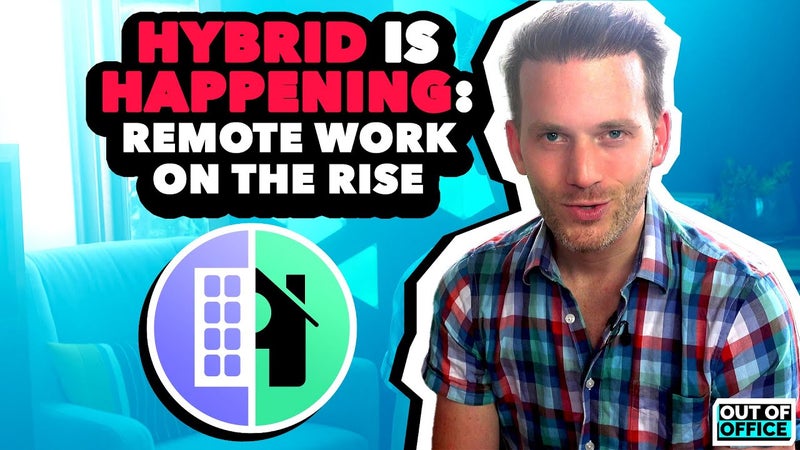Contents
- Hey! Welcome Back
- Hybrid Work: Official Proclamations Be Damned
- The Washington Post: Facing Hybrid Work Facts
- The New York Times: Recession or Not Here it Comes
- This Week’s Shareable
- Latest Remote Jobs
There are some CEOs who will stop at nothing to get you back to the office. In the battle for hybrid freedom, these experts know who's winning.
🧗 Washington Post: A Slow Climb Back to the Office
⚰️ The New York Times: A Recession Won’t Kill Remote Work
Hey! Welcome Back
It’s episode 21 and this week it’s full steam ahead on a topic that’s been making the rounds this year. Love it or hate it, hybrid work has been slapping the face of CEOs everywhere, challenging their return to office plans since 2021.
Last year was supposed to be the year of the big RTO.
Remote workers were told to snap out of it and prepare for office work 3.0. It was an ominous sign of things to come. But it’s a year later, and RTO still hasn’t made a comeback. That’s great news for us!
Let’s investigate why –
Hybrid Work: Official Proclamations Be Damned
Is it hot in here, or is it just the recent lack of fanfare about returning to the office?
So, the world has divided itself into three camps.

Those who are:
🏞️ All-in on remote work (living that remote life)
🐀 Nurturing a plague-like hatred for remote work (be gone business scourge)
🌗 And everyone else (…living that remote/office business scourge?)
The compromise is now broadly known as hybrid working.
New research has just come out from Stanford Economist Nicholas Bloom.
I’m going to break down what the experts learned about hybrid working in 2022 for you - right now.
The Washington Post: Facing Hybrid Work Facts
Bloom’s research was picked up by The Washington Post, and they focused their article on a specific chart. It shows how lackluster people have been to return to office over the past few years.
😗 Americans still haven’t entirely returned. That’s the tea.

The research shows this across 10 American cities, but from what I hear, it’s representative of what’s happening all over the world.
Take note of the pre-pandemic 100% occupancy rate, the plummet to zero during Covid, and the impressively slow two-year climb.
🐌 Finally, it lands near the halfway point.
What this means is that the vast majority of full-time workers are entering 2023 with some version of the hybrid model implemented where they work.
And don’t get Bloom started on pinpointing a single definition for hybrid work. The research shows there isn’t one. There are many.
Most companies say 2-3 days in-office and the rest at home, but the nuances persist!
This depends on:
🏭 Different industries
👷♀️ Your job function
👨🏿⚕️ How roles interact with customers…it goes on
It’s not just internal teams that are working together remotely, we’re also using remote tools more often, for things that were once in-person.
🤳🏽 Sales calls have gone remote
📲 Software demonstrations
💻 Working with ad agencies and video editors (like I’m doing right now)
In the article @SarahGreenCarmichael writes -
“In a hybrid workplace, the center of gravity isn’t necessarily the office. It’s technology and communication platforms and the norms that shape their use. And in a truly hybrid workplace, tasks are designed so that heads-down work can happen at home, with the office reserved for tasks that require interaction.”
That’s the key takeaway from the article.
🎊 We did it. We won.🎊
The moment I read this, it struck me. The majority of people finally accept that the most productive working environment doesn’t look anything like a typical office.

Row after row of cubicles, a thermostat set at a temperature that makes Jeff shoeless and Janet burrito herself in a shawl - while off-key happy birthdays ring out from distant cubicles. This was the normal that was forced on us, but it never felt right.
Even though some people aren’t ready to embrace fully remote work, at least nobody is deluded enough to say that 2023 is the year everyone will return to the office.
And The New York Times has fuel for that fire.
The New York Times: Recession or Not Here it Comes
In the kind of news we love to hear, the NYT published a piece saying something truly extraordinary. Not even the upcoming recession will end remote work.
Thank you Sarah Kessler! (She wrote the piece).
They go on to say that the opposite is more likely, as starved-for-cash companies realize that flexible working options are a competitive advantage.
Even when there aren’t pay increases to dish out, remote work is happy to step in to keep workers cheerful.
After all, job seekers will take a 14% pay cut to keep working from home. Where the economy fails, remote work adds value for companies everywhere.
“We are all back to prepandemic trends in online shopping, but permanently up on online work,” says Nick Bloom for the NYT article.

If hybrid working is the new normal then we’re halfway to victory.
Maybe soon we’ll see a job search engine that makes it possible to filter jobs by their hybrid work policies. Then we’ll really be out of the dark ages.
See you next week - don’t forget, the future of work is Out of Office.
Andrew
Swing by our chat and say hello.
This Week’s Shareable
- Remote work won’t just survive the recession, the latest data says it will be popular with companies looking to incentivize workers. This week on Out of Office, we explore the NYT and Washington Post research on hybrid work: the official new normal. Read it here. #hybridwork #RTOisdead
Latest Remote Jobs
One application can change your life forever. See one here?
💥Technical Delivery Consultant at Totogi, $60k ($30/hour)








